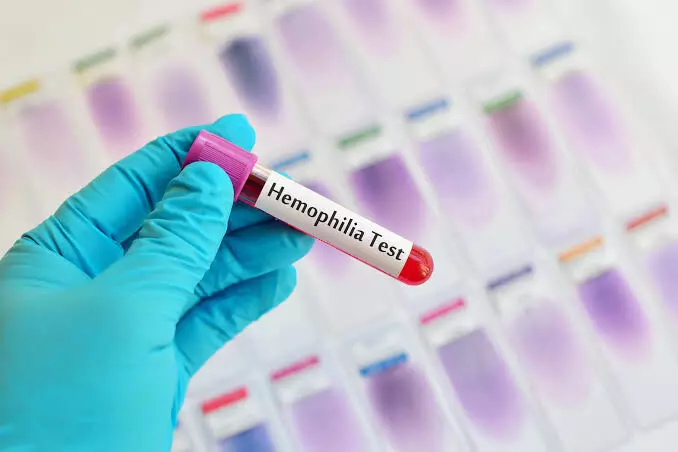World Hemophilia Day: How genetic testing, early screening can save women?
This year’s theme is an urgent call to action
By Neelambaran A
Representational Image.
Hyderabad: Hemophilia is an inherited bleeding disorder where blood doesn't clot properly due to deficient clotting factors resulting in increased risk of bleeding and bruising. The two main types are Hemophilia A (factor VIII deficiency) and Hemophilia B (factor IX deficiency), while Hemophilia C, known as factor XII, is considered extremely rare. This genetic condition primarily affects males, while females are usually carriers.
People with hemophilia bleed longer than normal, particularly internally. Common symptoms include excessive bleeding from cuts, spontaneous bleeding into joints and muscles, and easy bruising. The severity varies based on clotting factor levels.
Given the lack of awareness and wrong diagnosis, particularly among girls and women, the World Hemophilia Day observed on April 17 has selected the theme, ‘Access for All: Women and Girls Bleed Too’ for the year 2025.
Among bleeding disorders in women, Von Willebrand disease (VWD) is more common than hemophilia.
Unrecognized symptoms in women
While hemophilia is commonly known to affect males due to its X-linked inheritance, women can also be symptomatic carriers or, in rarer cases, have hemophilia themselves.
Dr K Karuna Kumar, consultant hematologist, hemato oncologist, and bone marrow transplant physician at Yashoda Hospital, Hyderabad, said, “Unfortunately, their symptoms often go unrecognized or are misdiagnosed. World Hemophilia Day serves as a crucial reminder to raise awareness about bleeding disorders and address the persistent gaps in diagnosis, treatment, and access, particularly for women and girls.
This year’s theme is an urgent call to action.
Challenges for women
Women with hemophilia or VWD often face severe difficulties, as symptoms like heavy menstrual bleeding, prolonged bleeding after childbirth, prolonged bleeding after surgery, and easy bruising are frequently overlooked or misdiagnosed.
“These symptoms are often normalized or misattributed to gynecological conditions, resulting in delayed care and a reduced quality of life. Studies have shown that over 75% of women with VWD experience heavy menstrual bleeding, which is significantly higher than in the general population”, Dr Karuna Kumar said.
In India, awareness about bleeding disorders remains low, despite the country having the second-largest population of people with hemophilia.
Undiagnosed cases in India
A significant number of hemophilia cases in India remain undiagnosed due to a lack of resources, stigma, and limited access to specialized care.
Dr Karuna Kumar emphasised the importance of genetic testing and early screening to identify the condition.
“Genetic testing not only helps confirm a diagnosis but is also critical in identifying carriers within families and supporting safe pregnancy and childbirth for women at risk”, he said.
Benefits of early diagnosis
Early detection through genetic counseling and laboratory diagnostics, especially for families with a history of bleeding disorders, is crucial. Initiating timely care can prevent severe issues.
“Timely diagnosis, comprehensive therapy, and equitable access to treatment can have on enhancing quality of life and preventing complications”, Dr Karuna Kumar added.
Building awareness at the primary healthcare level is equally important so that early signs are not overlooked at the first point of contact.
Besides recognizing the rare bleeding disorders, World Hemophilia Day is about making invisible symptoms visible. By creating awareness at the grassroots level, the healthcare system attempts to ensure no one is left behind simply because their symptoms don’t match the stereotype.